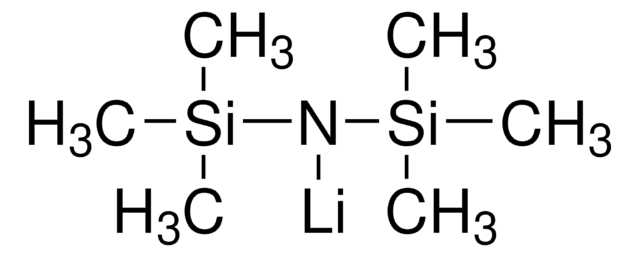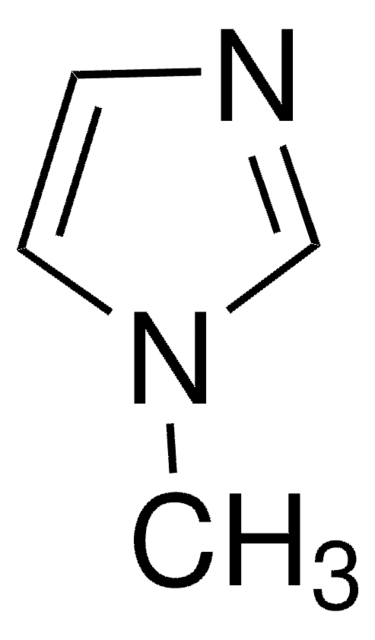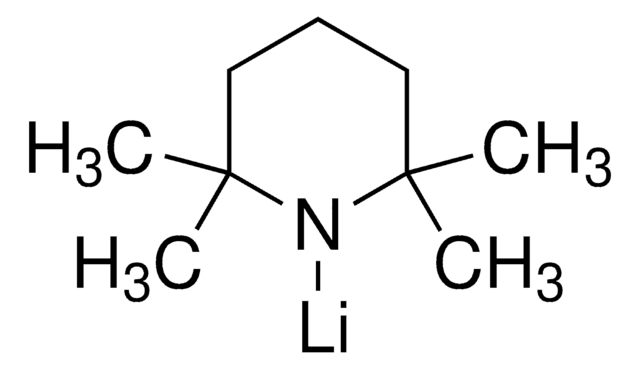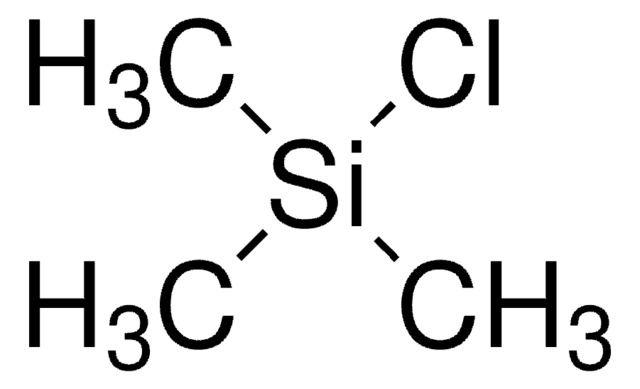224367
Litio bis(trimetilsilil)amida solution
1.0 M in hexanes
Sinónimos:
Hexametildisilazano lithium salt
About This Item
Productos recomendados
formulario
liquid
Nivel de calidad
concentración
1.0 M in hexanes
bp
55-56 °C
densidad
0.707 g/mL at 25 °C
cadena SMILES
[Li]N([Si](C)(C)C)[Si](C)(C)C
InChI
1S/C6H18NSi2.Li/c1-8(2,3)7-9(4,5)6;/h1-6H3;/q-1;+1
Clave InChI
YNESATAKKCNGOF-UHFFFAOYSA-N
¿Está buscando productos similares? Visita Guía de comparación de productos
Aplicación
Envase
Palabra de señalización
Danger
Frases de peligro
Clasificaciones de peligro
Aquatic Chronic 2 - Asp. Tox. 1 - Eye Dam. 1 - Flam. Liq. 2 - Repr. 2 - Self-heat. 1 - Skin Corr. 1B - STOT RE 2 Inhalation - STOT SE 3
Órganos de actuación
Central nervous system, Nervous system
Riesgos supl.
Código de clase de almacenamiento
4.2 - Pyrophoric and self-heating hazardous materials
Clase de riesgo para el agua (WGK)
WGK 3
Punto de inflamabilidad (°F)
-23.8 °F - closed cup
Punto de inflamabilidad (°C)
-31 °C - closed cup
Equipo de protección personal
Faceshields, Gloves, Goggles
Elija entre una de las versiones más recientes:
¿Ya tiene este producto?
Encuentre la documentación para los productos que ha comprado recientemente en la Biblioteca de documentos.
Los clientes también vieron
Nuestro equipo de científicos tiene experiencia en todas las áreas de investigación: Ciencias de la vida, Ciencia de los materiales, Síntesis química, Cromatografía, Analítica y muchas otras.
Póngase en contacto con el Servicio técnico

![1,8-Diazabiciclo[5.4.0]undec-7-eno 98%](/deepweb/assets/sigmaaldrich/product/structures/120/564/5b373e23-1624-489c-8efb-692de0f96ffb/640/5b373e23-1624-489c-8efb-692de0f96ffb.png)











